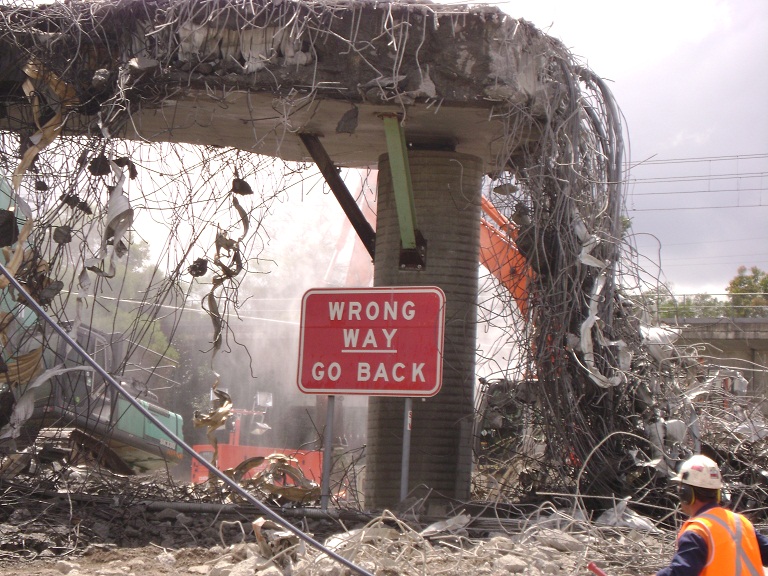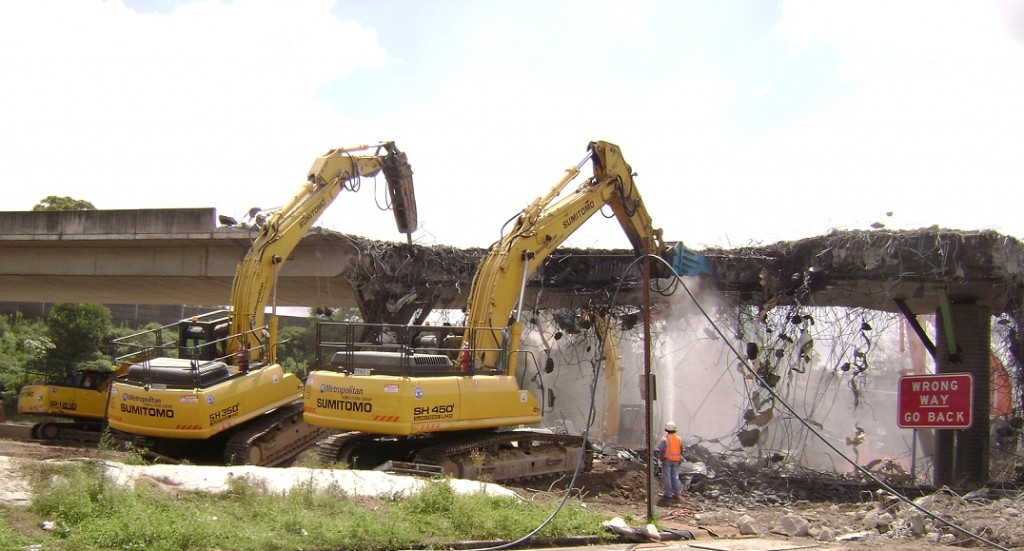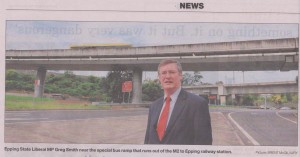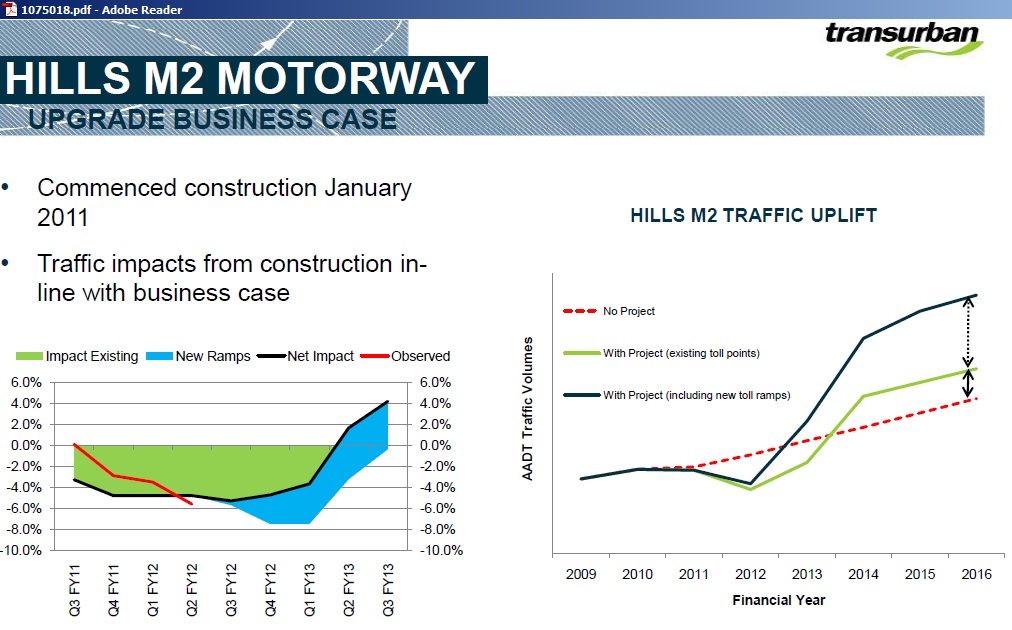This web-site continues to monitor the disconnect between toll-way expansions in Australia and global crude oil supplies. The latest peak-oil ignorant action in car-addicted Sydney is the demolition of a bus ramp to make room for a 3rd lane on the M2. This widening project increased M2 asset debts by around 60% at least, debt which never can and never will be paid back.
11/12/2012: No, this was not a terrorist attack. But no way back on this wrong decision to pull down a bus ramp connecting the M2 with the rail hub in Epping. The CO2 debt for that mild steel and the concrete will remain in the atmosphere for decades to come, long after the last cars have used the new M2 lanes.
Instead of building up Metropolitan public transport infrastructure for the era of permanent oil decline we see the Metropolitan demolition gang at work.
Irrespective of the peak oil ignorance the question here is of course: how much did Transurban pay the NSW government to compensate for the original construction cost of the ramp, not to mention for the re-construction cost if the ramp is needed in the year 20nn of permanent oil decline? And what kind of transaction will they enter in the infrastructure asset books of the NSW government? “Donated to Transurban”?
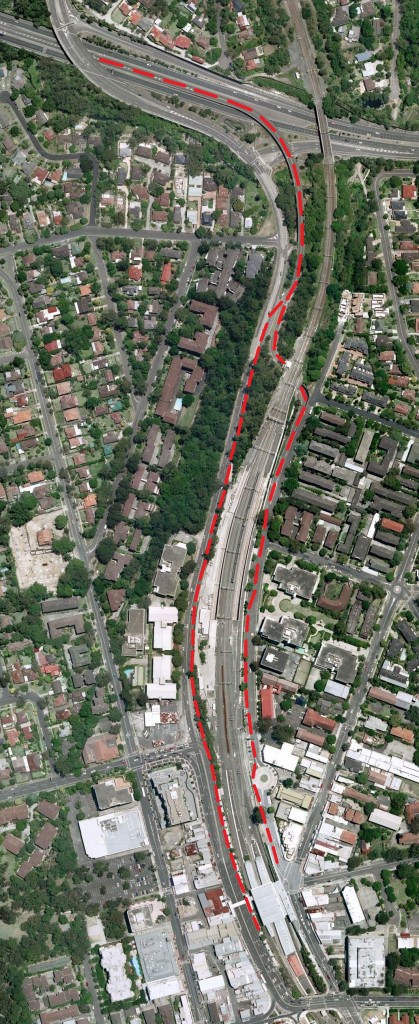 The bus ramp connected bus lanes on the M2 with the rail hub in Epping
The bus ramp connected bus lanes on the M2 with the rail hub in Epping
<= demolition picture taken here
In the evolving oil crisis if only 10 % of car drivers are forced by circumstances to take buses, there will not be enough buses. In this case and also when there are diesel shortages, buses will no longer have the luxury to go parallel to rail lines into the city but connect to the nearest rail station instead.
Well done, transport planners in Sydney. Few, if any, have understood what’s ahead of us.
<= Epping rail hub with 5 platforms and 2 rail lines to the CBD, one of which goes through an expensive, newly built tunnel to Chatswood.
Express trains to/from Newcastle stop here, too.
Traffic jam as a result of the demolition works at the M2 exit lanes. Most of these motorists would be blissfully unaware of peak oil and that their driving habits will have to change dramatically and involuntarily.
It also gives us a foretaste what will happen when motorists can no longer afford to pay ever increasing tolls. They will flood the local roads, provided they managed to get petrol and made it past the filling station around the corner. The petrol lines at filling stations alone will block everything up.
State MP Greg Smith: “M2 upgrade a burden without benefit….. You have to pay the full road toll just to drive 8km from Beecroft Rd to Marsfield….Residents should not be effectively marooned and greatly inconvenienced because a company which operates tollways wants to upgrade the M2 to increase its revenue and continue to pay senior officers exorbitant salaries.”
http://northern-district-times.whereilive.com.au/news/story/m2-upgrade-a-burden-without-benefit/
Easy to say when you are in opposition. Only months later Greg became Attorney General of a new government. Was there no legal way to stop the work approved by the previous government? The concern of the local electorate was forgotten. There is absolutely no difference between the major parties. They will deny peak oil or do not (want to) understand the consequences until judgement day when shortages arrive at the filling stations.
Thanks God they didn’t pull down the rail-bridge, too (background)
So what’s the latest peak oil news while the jack hammers destroy what will be needed in future?
 Dip in Iran’s oil supply gets China to buy from Saudi, Russia
Dip in Iran’s oil supply gets China to buy from Saudi, Russia
8/2/2012 Beijing/London: China is scouring the world for alternative oil supplies to replace a fall in its imports from Iran, as it seeks to negotiate lower prices from Tehran, and has been drawing heavily on Saudi Arabia.
That is definitely not good news for the Australian motorist. Because Australian refineries – in competition to China – are also scouring the world for crude oil, since supplies from Indonesia and Malaysia have peaked and imports are skyrocketing. Oil prices will go up.
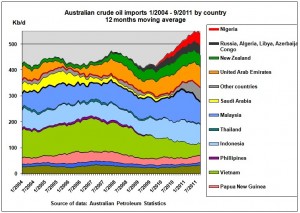 <= Australia doesn’t import much oil from Saudi Arabia anymore, but from UAE. It’s getting harder and harder to get crude oil from far-away countries like Nigeria, Russia, Algeria, Libya, Azerbaijan and Congo. As we have already experienced, some of these suppliers have their own problems. Maybe that contributed to Shell’s decision to close down Sydney’s Clyde refinery.
<= Australia doesn’t import much oil from Saudi Arabia anymore, but from UAE. It’s getting harder and harder to get crude oil from far-away countries like Nigeria, Russia, Algeria, Libya, Azerbaijan and Congo. As we have already experienced, some of these suppliers have their own problems. Maybe that contributed to Shell’s decision to close down Sydney’s Clyde refinery.
Outlook
Neither will it be good news for the motorists that tolls will be increased when the new lanes are opened.
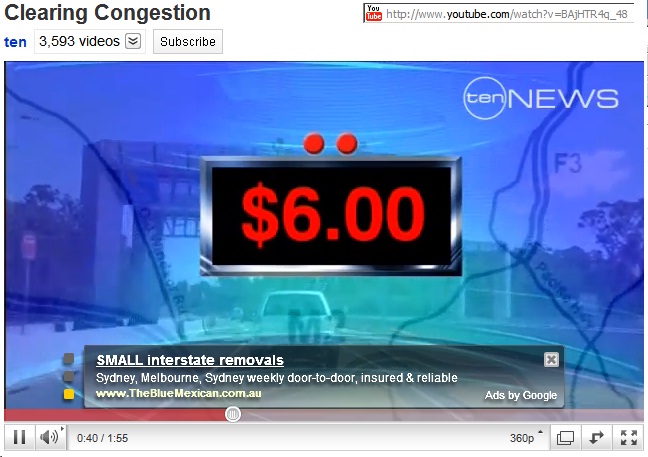 http://news.drive.com.au/drive/roads-and-traffic/wider-m2-will-drive-deeper-into-motorists-wallets-20101026-172ee.html
http://news.drive.com.au/drive/roads-and-traffic/wider-m2-will-drive-deeper-into-motorists-wallets-20101026-172ee.html
Higher tolls? The toll-way operator of the M2, Transurban, just made a half yearly profit of $97 m for the 2nd half of 201. So why increase the tolls?
Well, it’s in the contract with the NSW government and the direct result of infrastructure privatisation. Moreover, while many think Transurban is awash in cash, with so much toll-revenue coming in daily and assumedly without any risk, the fact is that Transurban sits on a huge mountain of debt which is actually growing as a result of the M2 widening.
November 2010
Refinanced $465.0 million of non-recourse project debt on the Hills M2 and raised $275.0 million of additional financing to fund the debt component of the M2 Upgrade project. (p4)
http://www.transurban.com/1004865.pdf
So that’s $ 465 m + $ 275 m = $ 740 m
Let’s have a look at some debt details from the investor presentation 7/2/2012 – sans mots – speaks for itself
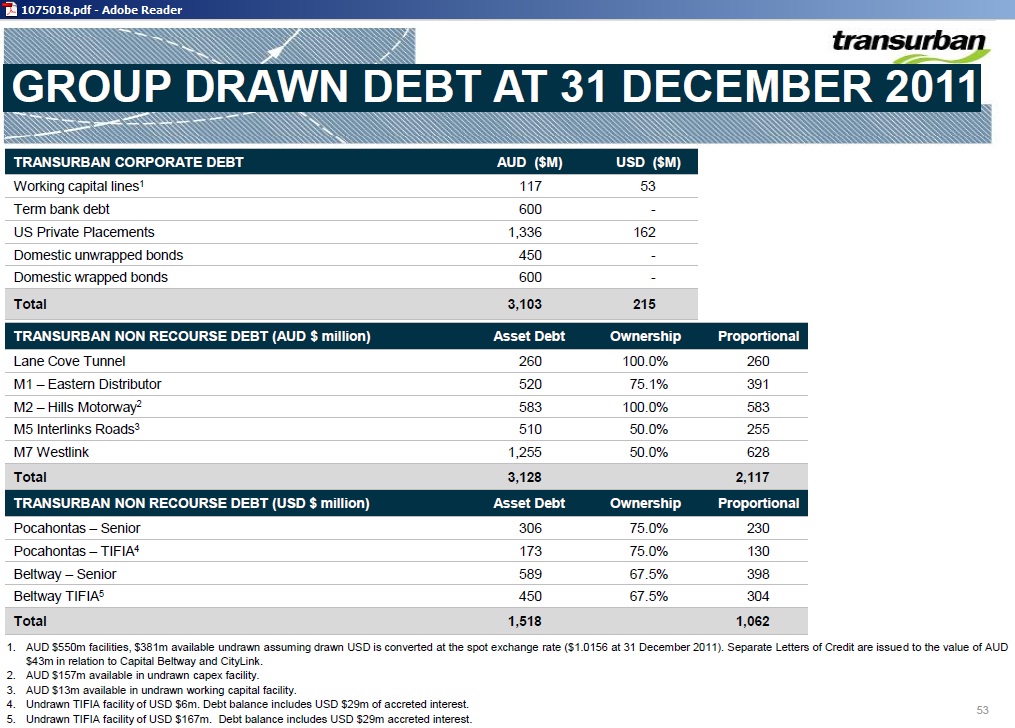 http://www.transurban.com/1075018.pdf
http://www.transurban.com/1075018.pdf
So for the M2 we have $ 583 m + $ 157 m capex facility (footnote 2) = $ 740 m. This is the equivalent of a bank loan obtained in November 2010 being $ 465 m refinancing of old M2 Hills motorway debt plus new, additional debt of $ 275 m for the M2 widening. But that is not enough. The cost of the M2 widening is $ 550 m. So where will the 2nd tranche of $ 275 m come from? Part of it is hidden in the Lane Cove tunnel (LTC) debt. We may remember the equity raising for the LTC was $ 542.3 m in May 2010. The acquisition cost in August 2010 was $ 634.6 m. So Transurban needed an additional $ 92.3 m. However, they obtained a loan of $ 260 m in that same month, $ 167.7 more than they needed. Why did they do this? The M2 widening was only approved in October 2010. Maybe banks were reluctant to take the M2 widening infrastructure as collateral so the $ 260 m now appears as debt of the LTC. But Transurban still needs $ 275 m – $ 167.7 m = $ 107.3 m to complete the M2 widening.
So we can make following debt increase calculations for the M2 as a result of the widening:
(a) Accepting the drawn debt table 31/12/2011
100*(583/465 -1) = + 25%
(b) As (a) but including the “hidden debt” in LTC
100*((583+167.7)/465 -1) = + 61 %
(c.) As (a) but including the capex facility which will definitely be needed to pay for continuing contractor bills
100*((583+157)/465 – 1) = + 59%
(d) As (a) but including both Hidden LTC debt plus capex facility
100*((583+167.7+157)/465 – 1) = + 95%
(e) For the whole construction cost to be financed by debt
100*((465+550)/465 -1) = + 118 %
And all this new debt in a period of permanent debt crisis? Yes, that’s what the growth model of toll-ways means. (by the way this was NOT mentioned in the above SMH article although this would have been pertinent in the context of the debt crisis)
Whatever the debt calculations are, the above LTC transaction covers up some serious cash flow problem in 2010 because the cash balance as at 30 June 2010 was $ 681.259 m, with a commitment to pay $ 634.6 m for the LTC, resulting in a balance of just $ 46.7 m at the beginning of the financial year 2010/2011.
And these are the refinancing requirements, a whopping $ 5.1 bn between Dec 2012 and Dec 2016
Good luck, Transurban, to get that money from credit markets while the global debt crisis is evolving and getting worse by the month. Higher oil prices, awareness of peak oil slowly penetrating the media, problems with alternative fuels, traffic softening and the growth model will unravel.
So who will be responsible when the M2 widening will not be a commercial success? We read in the ASX press release 12/8/2010
Hills M2 upgrade
In October 2009 Transurban achieved in-principle agreement with the NSW Government on a major project to upgrade the Hills M2. As part of the in-principle agreement, all tolls will increase by approximately 8% at construction completion and the concession, which currently expires in 2042, will be extended 4 years. Financial close is expected in the six months ended 31 December 2010 with construction to commence thereafter.
http://www.transurban.com.au/873885.pdf
Hold it. October 2009. That was 3 months after Transport Secretary Mrdak joined Infrastructure Australia (see previous post on what he knew about peak oil). And it was 7 months AFTER the BITRE 117 report on peak oil in 2017 was completed. So why was that report not communicated to the NSW government, to Transurban, CP2 and other investors? Well, courts will decide when bruised investors go for class action.
At 30 June 2010, the Environmental Assessment had been completed and public comment received.
Most of which was ignored. And definitely my own submission:
M2 widening: Primary Energy Dilemma for cars
http://crudeoilpeak.info/wp-content/uploads/2011/06/M2_Submission_Energy_Dilemma_For_Cars.pdf
By the time the NSW Director General approved the M2 widening in October 2010, the BITRE 117 report still had not reached his desk because in the approval document there is no chapter “Risks of the project”, a fatal flaw and a violation of the principles of prudent governance.
The submissions and preferred project report August 2010 mentions peak oil but just states:
“Alternatives to fossil fuels need to be found and transport must become more energy efficient.”
Well, where are the calculations for oil decline rates, which alternative fuels can be produced in which quantities, when and for which vehicles etc.? All this homework has never been done and even now, as financing of the M5 widening is prepared, these vital calculations are still lacking.
More details are here:
21/9/2010
RTA fails to present business case for M2 widening
http://crudeoilpeak.info/rta-fails-to-present-business-case-for-m2-widening-part-1
Let’s have a look at the projected traffic growth
February 2012: Is that a business case for the long term? Again: where are the oil and alternative fuel calculations? And look at that 16% traffic increase by 2016. Was 2017 not the tipping point year in the BITRE 117 report?
Conclusion:
The M2 widening mistakes are now being repeated for the M5, worsening Transurban’s debt situation. Once peak oil starts to bite in the form of stagnating or declining traffic volumes, this shaky house of debt cards will start coming down. In order to calculate when that happens, more detailed financial data on monthly cash flows and their projections would be needed.
Related posts on alternative fuels:
30/1/2012
Ethanol blended E10 would take 14 years to replace ULP in Australia
http://crudeoilpeak.info/ethanol-blended-e10-would-take-14-years-to-replace-ulp-in-australia
11/10/2011
Australia’s natural gas squandered in LNG exports
http://crudeoilpeak.info/australias-natural-gas-squandered-in-lng-exports
LPG http://crudeoilpeak.info/lpg
End of car culture in this decade
31/8/2011
1 billion vehicles in year #7 of peak oil
http://crudeoilpeak.info/1-billion-vehicles-in-year-7-of-peak-oil
Previous posts on the M2 (all ignored at investors’ peril)
4/4/2011
Sydney’s RTA builds M2 exit lanes for $200 oil
http://crudeoilpeak.info/sydney%e2%80%99s-rta-builds-m2-exit-lanes-for-200-oil
11/2/2011
Money in Transurban’s cash box not enough to complete M2 widening
http://crudeoilpeak.info/money-in-transurban%e2%80%99s-cashbox-not-enough-to-complete-m2-widening
5/1/2011
Sydney’s M2 toll increase high above RBA inflation target (part 3)
http://crudeoilpeak.info/sydney%e2%80%99s-m2-toll-increase-high-above-rba-inflation-target-part-3
9/11/2010
M2 widening increases Sydney’s oil vulnerability
http://crudeoilpeak.info/m2-widening-increases-sydney%E2%80%99s-oil-vulnerability
28/10/2010
Quick risk analysis for M2 widening (part 2)
http://crudeoilpeak.info/quick-risk-analysis-for-m2-widening-part-2
25/10/2010
Sydney’s RTA about to pull down public transport infrastructure (part 1)
http://crudeoilpeak.info/sydney%E2%80%99s-rta-about-to-pull-down-public-transport-infrastructure-part-1
